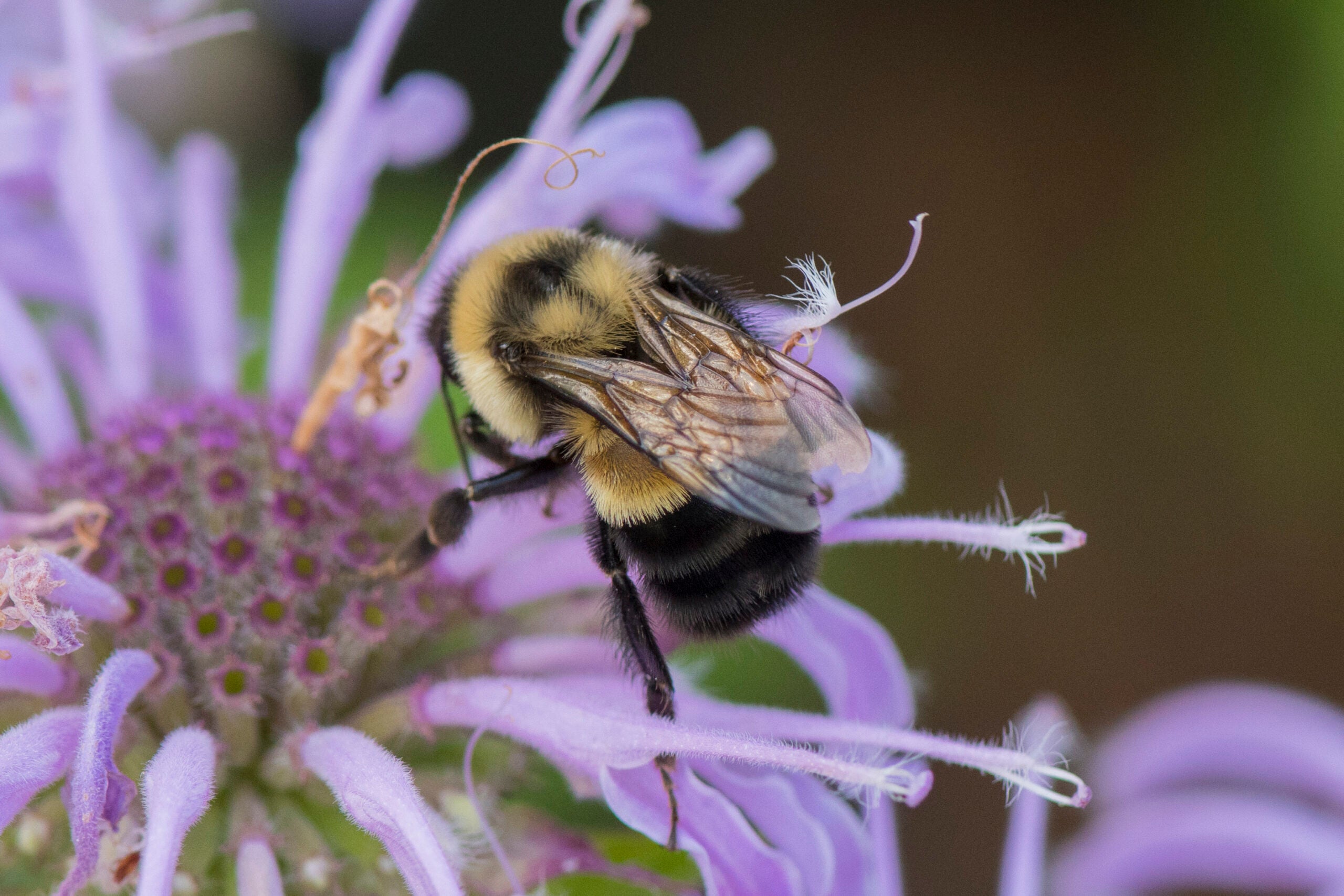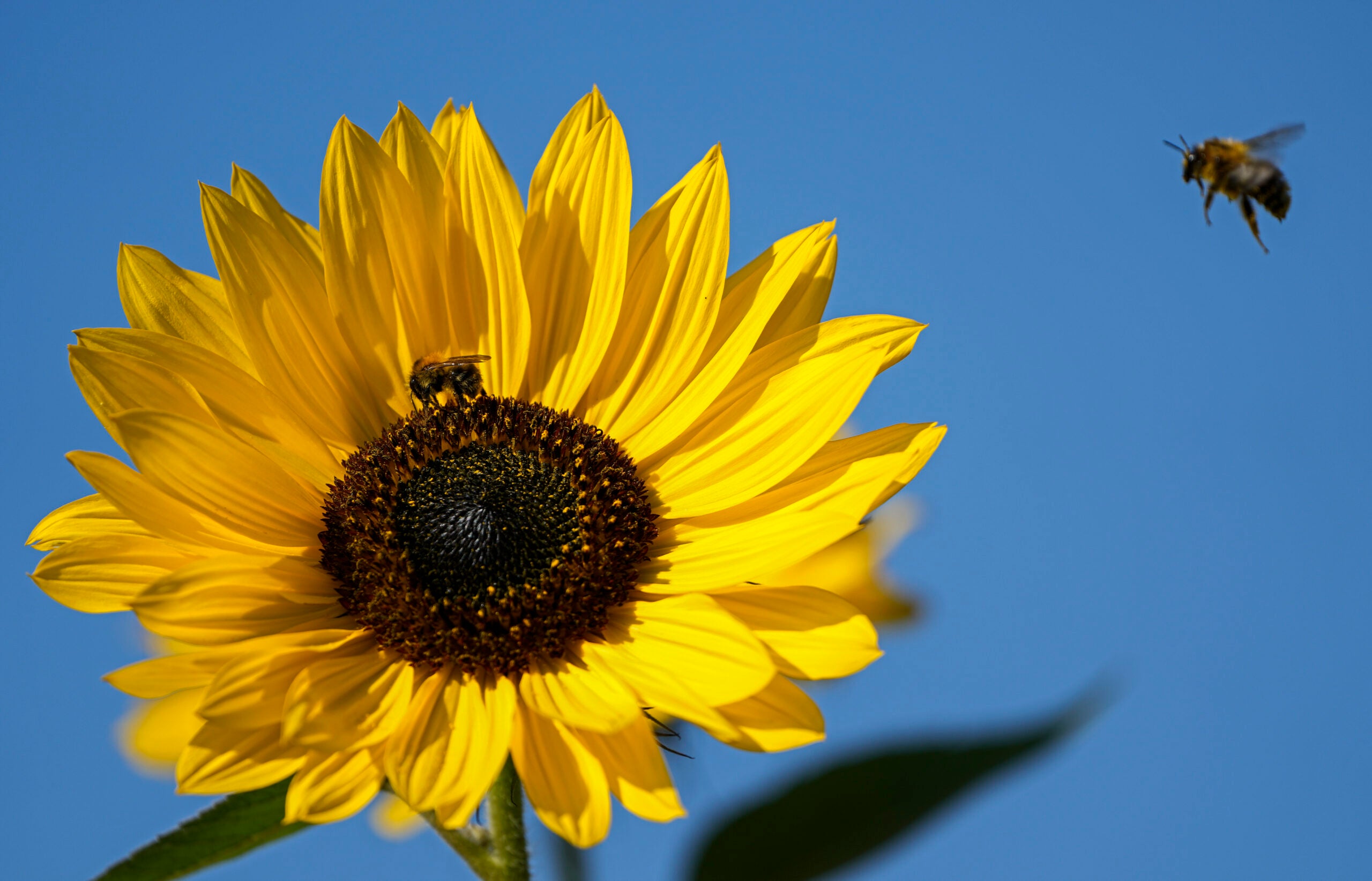The Plight Of The Honey Bee
Featured in this Show
-
The Plight Of The Honey Bee Part 1
The estimated value of the pollination that honey bees provide to grow crops in the United States is $15 billion dollars a year. Bees also ensure the survival of 35 percent of the world’s food output each year. But, with Wisconsin losing around 45 percent of its bee population every winter for the past few years, the outlook for bee health and survival is ominous.
Oscar Carlson, a former professor of etymology at UW-Stout and an avid apiarist, has more than 40 years of experience both keeping bees, and a coat of welts on his body to prove it. Just outside of La Crescent, Carlson inspected one of his hives for the tiny Varroa Mite, one of the issues in the fight for survival of the honey bee.
“After, I don’t know , the 1980’s, A person brought honey bees over from Europe and they had the mites, the Varroa Mite, which is a mite on the outside of the bee, for its action, its much like having a leech on you: it sucks the blood of the bee,” Carlson said.
Eliminating the Varroa Mite is a major task, since the reproductive success of the mite corresponds with the emergence of juvenile bees. Harsh chemical treatments are the most effective means to control infestation; unfortunately these chemicals, such as concentrated phenol, are precarious for the health of the bees. Liz Meils is the State Apiarist for the Wisconsin Department of Agriculture Trade and Consumer Protection. She said researchers have been working to create a mite-resistant honey bee.
Varroa Mites are just one challenge compounding the litany of factors diminishing the health of the honey bee. Since 2006, the recognition of an undiagnosed spectrum of mysterious bee disappearances called Colony Collapse Disorder or CCD has decimated honey bee colonies. Meils, said that CCD is correlated to mites, viruses, and pesticides.
“They’re also struggling with habitat loss, or inadequate forge and that leads to inadequate nutrition, and not to mention the stress of being trucked around the country to pollinate our food,” she said.
Honey Bees, and all pollinators, are seen as the keystones between the flora and fauna of an environment. They are estimated to pollinate one-sixth of all plant species inhabiting the globe. Plants like; cotton, coffee, and cranberries, things you find on a farm.
Hoch Orchard in La Crescent, is near where Oscar Carlson keeps his bees. Harry Hoch is a second generation apple grower, and in his continuous quest to reduce the environmental impact on his farm, has sought methods that promote biodiversity. Like Carlson, Harry Hoch believes today’s farming techniques and commercial honey production overlooks the diversity of pollen and nectar sources that honey bees require.
“In my opinion, a lot of the issue comes to the amount of feeding that the big commercial growers do with their bees, they take away as much honey as they can, and feed them with sugar syrup, and it’s kind of like taking a good balanced diet away, and adding a bunch of candy,” Hoch said.
In 2014, the U.S. Department of Agriculture introduced a new wildflower planting incentive for current participants of the Conservation Reserve Program. The Bee Incentive Program has the potential to influence nearly 245,000 acres of qualified land within Wisconsin.
Earlier this year, a preliminary survey by the Bee Informed Partnership suggested Wisconsin lost 60-percent of its bee hives in the past year. Beekeepers say planting bee gardens and being mindful of fertilizer use is a start to improving conditions for honey bees.
-
The Plight Of The Honey Bee Part 2
While the number of bee colonies and honey production were up in 2014 in the United States, unstable conditions for the honey bee have made the business of honey production precarious as well in Minnesota and Wisconsin.
The upper Midwest, led by North Dakota and South Dakota, remains the most stable area of the country to produce honey, but production in Wisconsin and Minnesota has dropped substantially in the past 20 years.
The average honey yield in Minnesota and Wisconsin is about 60 pounds per bee colony. 20 years ago, University of Minnesota Department of Entomology professor Marla Spivak said the yield in Minnesota was more than 100 pounds per colony. She attributes the drop to bees having fewer flowers to pollinate.
Spivak said for commercial beekeepers, now is a tough time to make a living.
“If bees were cattle, and the rancher was losing a third of his livestock every year, like beekeepers lose a third of their bee colonies every year, it’s very difficult to maintain your business financially,” she said.
One way beekeepers have been able to keep going is to divide their colony and add an additional queen bee to the mix, creating two separate bee colonies. While this has become a common way to maintain a honey producing business, it also comes with greater labor and financial costs. Wayne Lemar, the vice president of the La Crosse Area Beekeepers Association said by having to divide bee colonies, beekeepers are reducing the strength of a bee colony which in turn means bees are producing less honey.
Wisconsin is typically a top 10 state in honey production, but fell out of the top 10 in 2014. Wisconsin Honey Producers Association vice president Matt La Forge said 2014 results are not being attributed to any particular bee crisis, it just wasn’t a great year for honey production in Wisconsin.
“The season does matter a lot for honey production,” La Forge said. “Different areas of the state, if they get more or less rain at the right or wrong time that can make a big difference.”
The U.S. Department of Agriculture says honey set a record price in 2014 at $2.16 per pound, up 1 percent from 2013.
Episode Credits
- Maureen McCollum Host
- John Davis Producer
- Mary Meehan-Strub Interviewer
- Marla Spivak Guest
- Wayne Lemar Guest
- Matt La Forge Guest
Wisconsin Public Radio, © Copyright 2024, Board of Regents of the University of Wisconsin System and Wisconsin Educational Communications Board.


